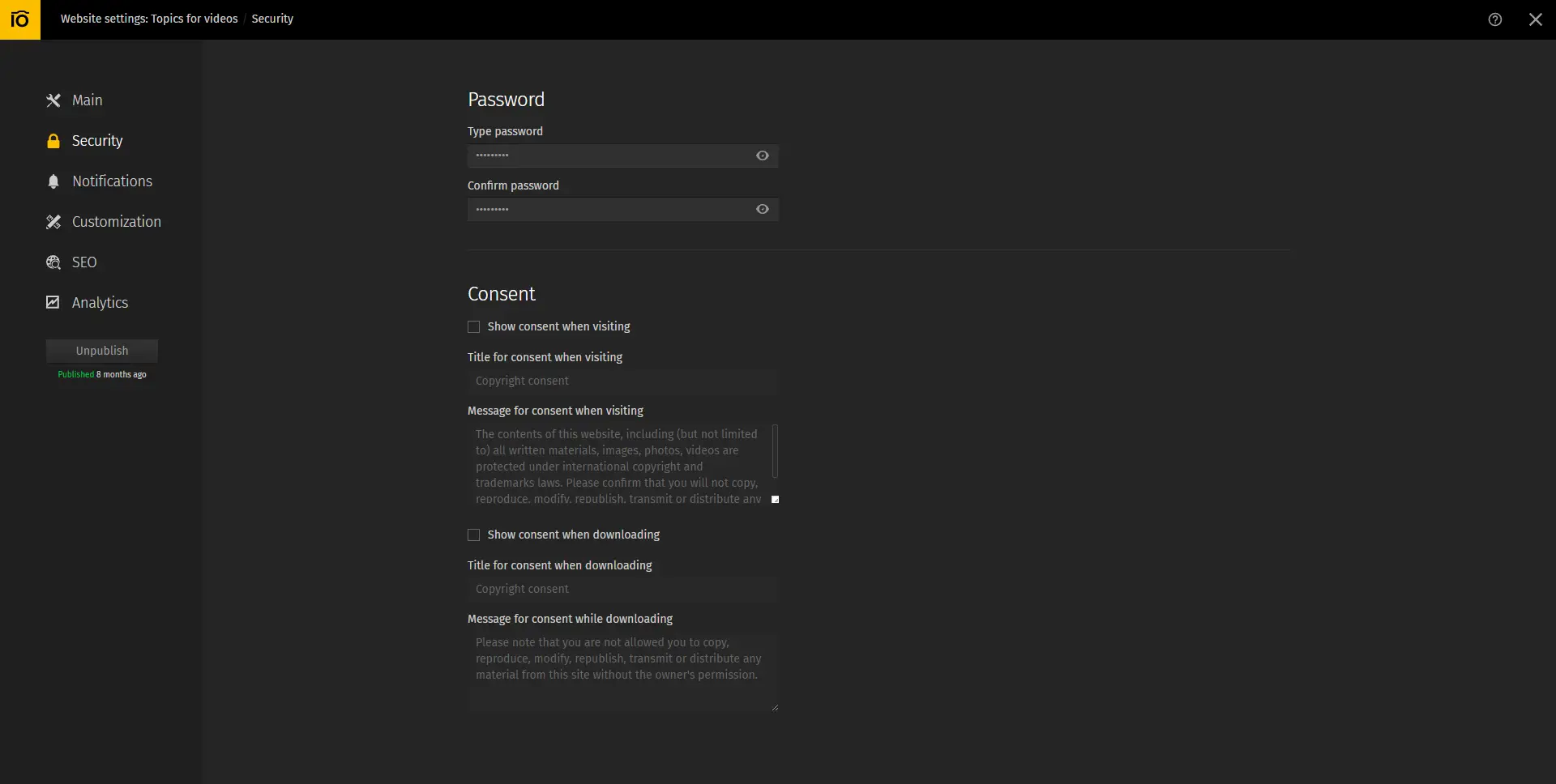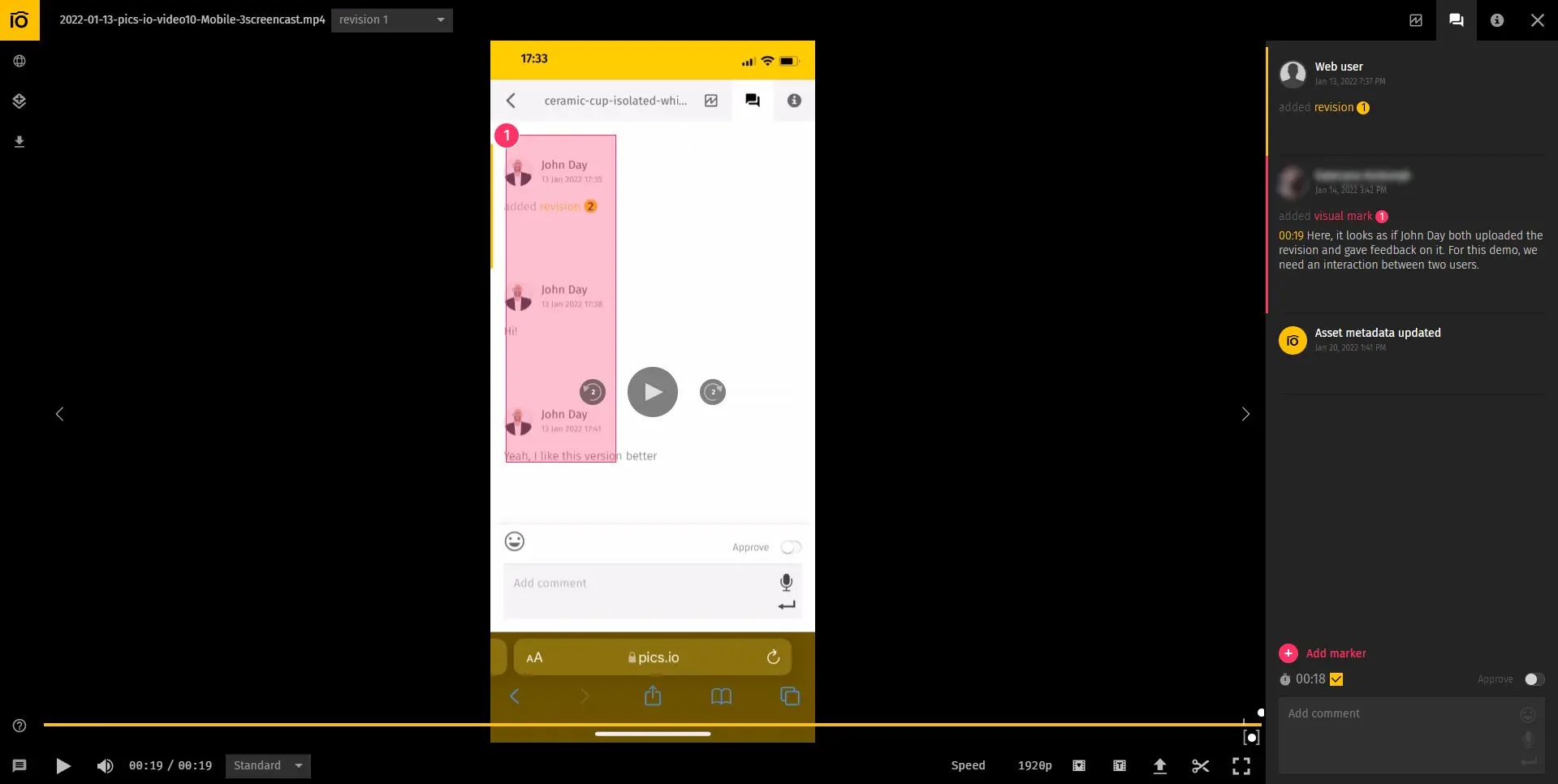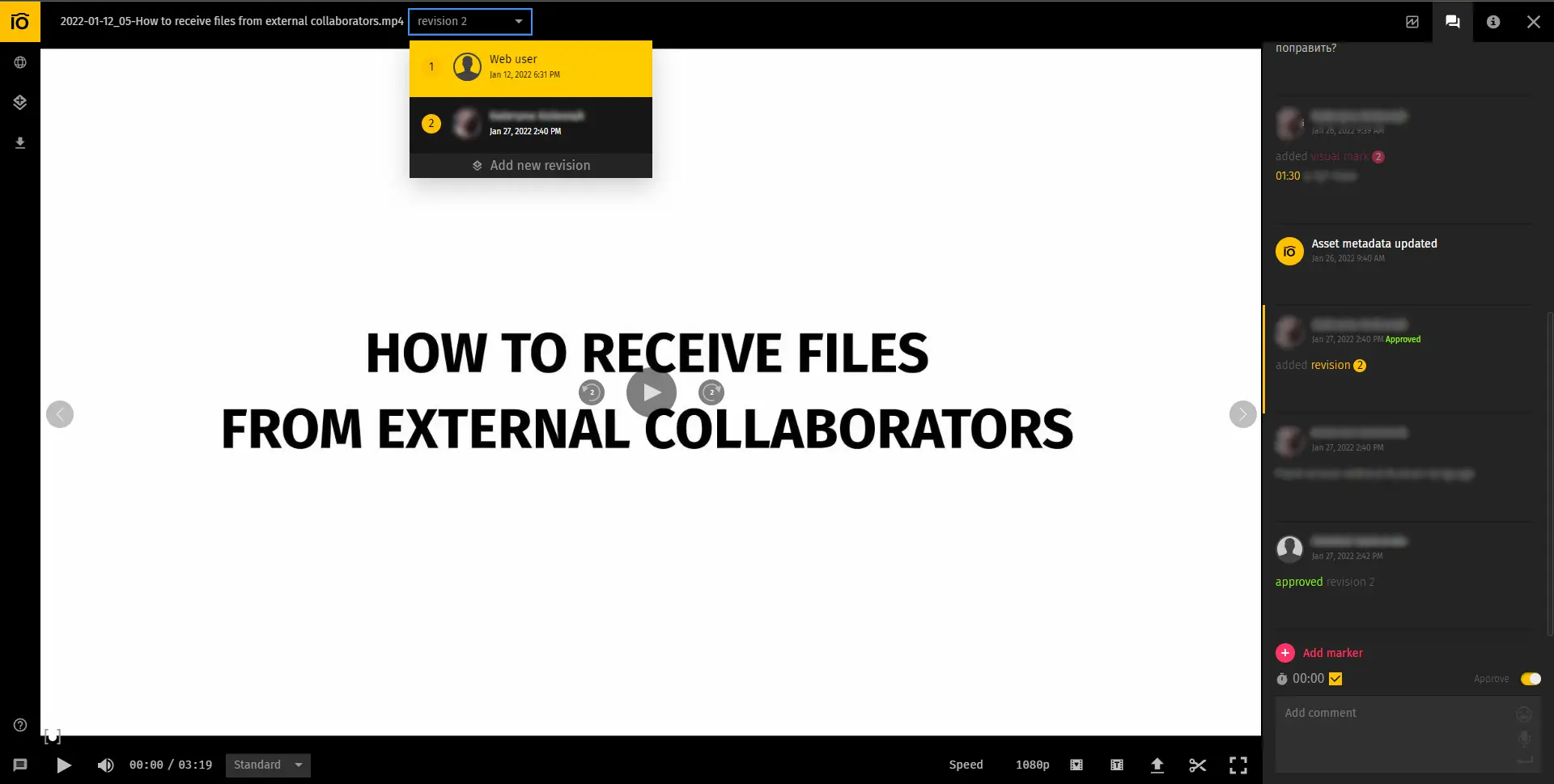In this article, you’ll learn:
Contractors are quite useful as they can help you fill out a niche that does not warrant a full-time position. Maybe you want to produce a few marketing videos or you need a photographer at a specific conference that you cannot attend. Whatever the occasion is, they are there to help.
Yet, their unique advantages are double-edged. When it gets to the point of exchanging the assets between yours and theirs, you may realize that there are a few problems. These problems pertain to the aspects of security, convenience, and time.
You can exchange data securely but it may not be convenient or fast. For example, you can ask that contractors use your company’s VPN when accessing sensitive information but setting it up takes time and limits contractors’ opportunities to work on the project as they need to be constantly on the device with an active VPN.
Of course, you can go in a different direction. Instead of setting up VPN so that contractors can access your internal network, you can exchange files through Drive or Dropbox. It’s convenient as everybody knows how to use them. And it certainly can save some time. But security is more or less out of the window. Once files are on Dropbox it’s beyond your control what people can do with them after they’ve downloaded them. Not to mention that security measures such as passwords are so often circumvented.
So, how do you decide when to sacrifice one aspect over the other, and is there a perfect way to get all 3 at the same time?
In this article, we’ll try to answer both of these questions. First, I am going to give you general tips on the best practices for data sharing, and then I will talk about Pics.io’s way of doing things.
Let’s dig in.
Securely Sharing Data with Contractors: Best Practices
Create security clearance categories
If you need to rely on the traditional ways of sharing information with third parties (e.g through Dropbox and such), I suggest you do an internal audit to determine how sensitive the information that you are sharing is.
Public access. Essentially things that you don’t mind sharing or are fine with getting accidentally leaked. Perhaps you’re trying to work on a design for a new logo, so you want to send the contractor a vector of your existing logo and some branding guidelines. Such information is more or less publicly accessible anyway and I doubt that somebody can do a lot of mischief with a work-in-progress on a new logo. For these kinds of files, it’s more than safe to just send them over through the most convenient channel.
Sensitive information. This is the information that you’d prefer to remain private. Otherwise, things might get uncomfortable, and you can end up with a lawsuit. For example, you might have hired a freelance photographer to make some photos for you at the conference. The problem is that you don’t control who ends up in a shot there, and not everyone can consent to photos that can be then distributed. Especially if we are talking about photos of minors where legal hoops get even more complicated.
In another scenario, you might be preparing marketing materials for a new product new feature that you are going to release in the not-so-distant future. Getting those out in the wild won’t be great and it can mess up the timing and pace of your preparations. Of course, by the time you are preparing marketing assets, there’s no risk of the competition beating you to the market from zero. But it might still spoil your plans.
When exchanging such things, ensure that you have protected yourself against accidents. Adding passwords to files and asking contractors to sign a Terms of Use clause is what I’d suggest.
Confidential information. Something that you absolutely, under no circumstances want to get leaked to the public. From your users’/consumers’ private data to info on your early prototypes - things that are confidential for a reason.
Handling such sensitive information is the right time to bring out all security guns and sacrifice time and maybe even convenience. NDAs, are accessed only through VPN and, potentially, only through the company’s internal network with limited ability to download or copy assets.
If you take all necessary precautions, the odds of m&a data room providers breaches can be reduced to the minimum. At worst, if they happen because of contractors’ negligence, you can at least guarantee that you won’t be the only one bearing the brunt of the consequences.
The thing to avoid at all costs. Do NOT share internal logins with contractors
It shouldn’t be said but given that we still live in a day and age when those things happen, I think it’s a point worth reiterating. Under no circumstances should you share your company’s accounts with contractors.
Why would one even do such a thing? Well, as I’ve said before, exchanging confidential or highly sensitive information requires you to jump through multiple hoops that many find tedious.
If you’re using Atlassian’s Confluence, for instance, there might be some documentation that you want contractors to take a gander at. But you don’t feel like setting up access to them and doing all these silly things… what if you just gave them keys to your account for a quick sneak peek?
Well, things can happen. Even something as simple as forgetting to change your credentials after you’ve shared them can lead to unforeseen consequences. Plus, when you’re sharing credentials, there’s no overhead and the contractor can do anything that you could. Whereas if you were to set up an account with proper permissions, you could have fine-tuned what they can do in your internal network.
Overall, there are plenty of things that you need to consider when sharing information or access to internal networks with contractors. A number of things can go wrong without you even noticing.
A Question of Convenience: How To Share Files Conveniently?
I don’t want to talk about all the options out there. When it comes to file sharing, there isn’t really a groundbreaking innovation to be found among the most popular tools. Be it Dropbox, Microsoft’s One Drive, or Google Drive, capabilities and features are pretty much in line with each other. There are some nuances, of course, but they are pretty negligible.
If all you need is to upload a file, protect it with a password and share it with someone outside your organization, all popular solutions will suit you well.
The issue is that they are not exactly convenient and require you to do weird hacks to do everything in one package. If you want someone else to upload files to your Google Drive, you either need to create a file upload form with some scripting or create a shared folder on your Google Drive and allow others to upload to that folder.
The problem here is that it’s not fast, especially if we’re talking about file upload forms. Returning to the photographer at a conference scenario, they will be shooting dozens of photos. I don’t think it benefits anyone if they have to spend some odd hours filling out forms for each photo.
Turning elsewhere, the ability to properly manage revisions is non-existent. Not only you will soon end up with a mess of a folder that has like 12 slightly different versions of an image/video but you don’t have a convenient way to share feedback. The very same Google has a more than fine way to collaborate on text-based documents but lags behind when we are talking about the visual medium. So you’ll have to use some combination of a file-sharing service and + messaging platform (Slack, email, or your choice). Even with multiple integrations, it’s a far cry from condensing everything in one place.
Of course, that might not be a problem for some organizations. When you have these odd collaborations once a year or some such, I won’t disagree that dealing with momentary inconvenience is more sensible than investing time and money into building a better infrastructure for these things.
Yet, if you are finding yourself working with contractors and freelancers on a more regular basis consider investing in solutions that can facilitate this process. In this case, I’m talking about Digital Asset Management (DAM).
What is Pics.io DAM and How it Can Help With File Exchange?
So, digital asset management is a type of software that makes your media library more manageable. There are many features that contribute to that cause. Like metadata search, for instance. It lets you tag your assets with metadata (like adding descriptive keywords or adding a product’s price directly into the image’s metadata fields), but we’re not talking about that right now.
If you want to learn more about DAM’s general purpose, feel free to visit our landing page.
But since we’re talking about file sharing with contractors here, I am going to talk about that. And to make the point more illustrative, I will describe how we used our own product when we were producing a series of YouTube videos describing each facet of our product.
How We’ve Used Pics.io DAM to Create Our YouTube Video Series
At the end of 2021, we’ve decided to make a series of short videos to showcase each feature of our product. Some features we have can seem quite complex when described on paper but are actually quite simple to use. To demonstrate that to existing and would-be users, video content seemed like the most sensible choice.
Here are the steps we’ve taken and how Pics.io helped us along the way.
Prepare assets for the video production company
For each video, we needed 3 things:
- Script for the narration
- Screencast of using each feature. This saved time on onboarding our contractors as they could just replicate steps from our recording.
- Assets to be used during their recording. If we were showcasing search functionality on a gallery of furniture photos, we would send these photos over to our partners.
Once we’ve prepared everything, instead of bothering with email attachments or Dropboxes we just uploaded everything to our media library.

Share asses with partners
Yes, you’ve heard it right. We uploaded it to our Pics.io library. And no, we weren’t planning on adding a representative of the video production as a teammate in our DAM. Instead, we’ve used something we call Websites. Websites let us turn any folder in our library into a fully interactive webpage. So anyone with a link to it can view, download and comment on all assets inside.
Instead of doubling the effort of storing these files in our internal network (for archival purposes) and then sending these files over to our contractors, we can upload assets only once and then share access to them with whoever needs them.
When you share assets in this way, visitors don’t have a way to see anything beyond things that you’ve shared with them. And you can go even harder on security measures by password-protecting the website and adding consent forms and ToS.

Note: although, if you wanted to do that, you pretty much could have. Permission management lets you create roles with as many restrictions as you need. In our case, we could have just invited one or two peoples from the video production company and made it so that they can only view and interact with the assets in their work folder.
Receive completed videos from our contractors
Once again, Pics.io lets you avoid duplication of effort. Instead of asking contractors to upload files elsewhere so that we can upload them to Pics.io, we shared an Inbox link with them. Inboxes are self-explanatory - it’s a page where people without access to your library can upload assets for you.
From there, you can preview everything that has been uploaded and move them to required collections in just a click.
Iterations and Changes
Obviously, you can’t make a perfect video on the first try and we had to do some changes before we reached the finalized product.
Pics.io came to the rescue as we could communicate with our contractors directly through Pics.io’s interface.
We’ve moved the first versions of the video to the same folder that we’ve shared as a website previously. Then, we used our commenting section to highlight parts that we thought needed improvements.
Here’s an example of how it looked while we were working on our mobile app showcase. We’ve noticed that the screencast makes it look as if certain John Day was giving feedback on the revision that he himself uploaded. It’s an easy thing to miss which is why we’ve used a highlighter + time stamp to show exactly the part that needs to be changed:

Once we received an amended version we just uploaded it on top of the existing one so as to not clutter our folders with multiple versions of the same idea. Because of how version control works in Pics.io, you can always switch back and forth between different versions of an asset to compare everything that has been changed.

Ready to be published
After going through a similar process for all videos, we’ve finally finalized and approved videos on each topic. To let our social media manager know which versions to upload, we’ve marked them as approved, so they wouldn’t have to wonder and ask which one to use.
You can check out how these videos turned out on our YouTube channel. Here’s a sample:
Conclusion
I will not lie: for us, making these videos was a challenging and often stressful process, but it would have been even more so if we had to bother with juggling file-sharing platforms and gathering feedback from our email inbox.
Exchanging files with contractors is often a nerve-wracking experience but it doesn’t have to be. If you tend to work with third parties on a regular basis, consider trying out Pics.io for free with a 7-day trial.
As the only DAM solution on the market that fully integrates with your existing Amazon S3 or Google Drive storage, you don’t even have to move your assets anywhere for a demo run. Just sign up, sync your Drive and you’re good to go.




